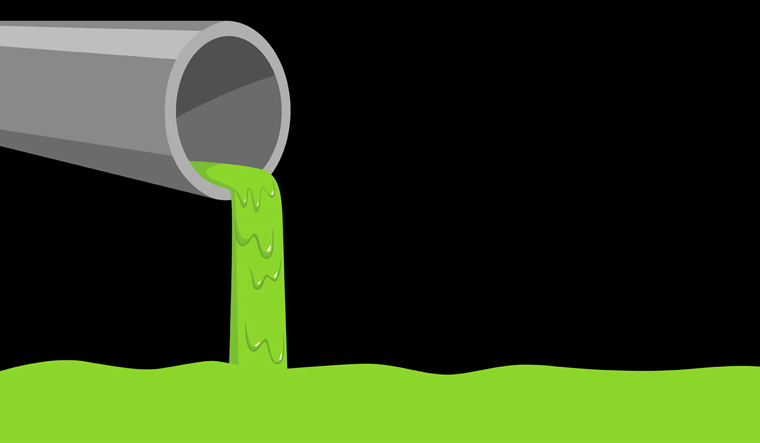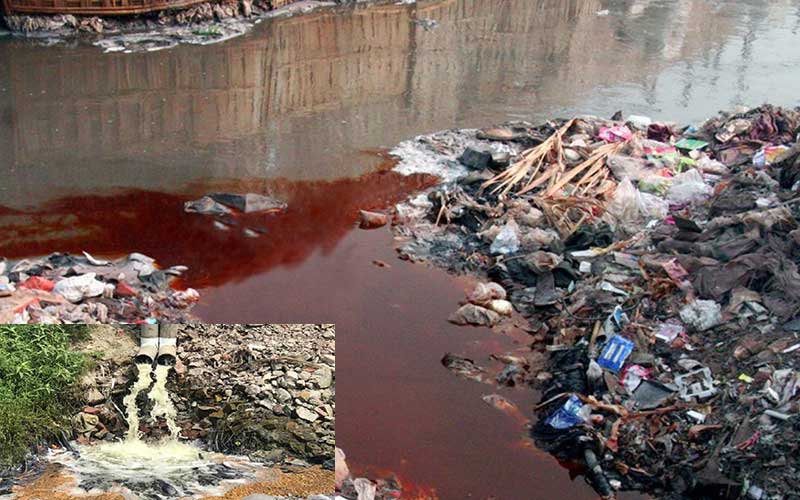Industrial Wastewater Treatment: Custom Solutions for Facility Wastewater Difficulties
Industrial Wastewater Treatment: Custom Solutions for Facility Wastewater Difficulties
Blog Article
How Fluid Waste Disposal Works: A Thorough Introduction of Strategies and Technologies Employed

Review of Fluid Waste Types
The intricacy of fluid waste kinds necessitates an extensive understanding of their qualities and implications for disposal. Fluid waste can extensively be classified right into a number of kinds, consisting of industrial, local, farming, and contaminated materials. Each category displays distinctive homes, requiring details monitoring strategies to minimize ecological and wellness dangers.
Industrial fluid waste stems from producing processes and often consists of a variety of pollutants, such as hefty metals, solvents, and organic substances. Metropolitan fluid waste, mainly comprising wastewater from houses and business establishments, contains natural matter, nutrients, and pathogens (industrial wastewater treatment). Agricultural liquid waste, consisting of drainage from farms, might contain fertilizers, pesticides, and pet waste, posing threats to water quality and communities
Dangerous fluid waste is defined by its toxicity, sensitivity, or prospective to create injury. Understanding these diverse liquid waste types is important for creating reliable disposal techniques and ensuring compliance with ecological guidelines.
Physical Therapy Approaches

Screening is the first step, where bigger bits and particles are gotten rid of from the fluid waste making use of screens or grates. This procedure safeguards downstream devices from damages and guarantees smoother procedure. Adhering to testing, sedimentation utilizes gravitational pressure to different solids from fluids. In sedimentation storage tanks, heavier bits work out near the bottom, forming a sludge layer, while the clarified fluid can be additional treated.
Filtration is another necessary approach that entails passing the liquid via porous materials, such as sand or membranes, to record smaller particles. This action enhances the high quality of the fluid, making it appropriate for subsequent treatment procedures.

Chemical Treatment Methods
Chemical therapy methods are important for properly handling liquid waste, specifically in resolving liquified and colloidal contaminants that physical approaches may not adequately get rid of. These methods utilize numerous chemical agents to reduce the effects of, speed up, or transform harmful materials into less hazardous kinds.
One common technique is coagulation and flocculation, where chemicals such as alum or ferric chloride are added to advertise the gathering of suspended bits. This procedure enhances sedimentation, enabling much easier elimination of the resulting sludge. Additionally, oxidation processes, using representatives like chlorine or ozone, are utilized to damage down complex organic substances and virus, rendering the waste much safer for discharge or further treatment.
Neutralization is an additional vital strategy, which adjusts the pH of acidic or alkaline waste streams to neutral degrees, avoiding prospective harm to downstream systems and the atmosphere. In addition, progressed oxidation processes (AOPs) use combinations of oxidants and ultraviolet light to degrade consistent contaminants, attaining a greater degree of therapy efficiency.
Organic Therapy Processes
Organic therapy processes play an essential duty in the management of liquid waste by making use of microbes to decay raw material and minimize contaminant levels. These procedures can be generally classified right into cardio and anaerobic treatments, each employing certain microbial areas to accomplish efficient waste degradation.
Cardiovascular therapy entails making use of oxygen to help with the breakdown of natural materials by bacteria. This process is frequently carried out in turned on sludge systems, where oygenation storage tanks supply a favorable environment for microbial development, leading to the oxidation of organic toxins. The resultant biomass can be divided from treated effluent through sedimentation.
On the other hand, anaerobic therapy takes place in the lack of oxygen, depending on different bacteria to damage down raw material. This approach is specifically beneficial for high-strength waste, as it generates biogas, an eco-friendly power source, while decreasing sludge manufacturing. Technologies such as anaerobic digesters are regularly employed in municipal and commercial applications.
Both anaerobic and aerobic organic treatments not just lessen the ecological effect of liquid waste however also promote resource recuperation, making them important components of lasting waste management methods. Their effectiveness, effectiveness, and versatility support their prevalent implementation throughout numerous sectors.
Emerging Technologies in Disposal
Innovative methods to fluid waste disposal are quickly advancing, driven by developments in modern technology and a boosting focus on sustainability. Amongst these arising technologies, membrane bioreactors (MBRs) have actually obtained grip for their capacity to combine biological treatment with membrane filtering, leading to top quality effluent that can be reused in numerous applications. MBRs allow smaller sized impacts and more efficient operations compared to standard systems.
An additional promising development is using anaerobic digestion integrated with nutrient healing modern directory technologies, which not just treats liquid waste but also generates biogas and recovers valuable nutrients like nitrogen and phosphorus. This twin advantage boosts source performance and reduces ecological impact.
In addition, advanced oxidation procedures (AOPs) are being embraced for the deterioration of complicated natural pollutants. These methods utilize effective oxidants and stimulants to damage down pollutants at the molecular degree, offering a highly reliable option for difficult waste streams.
Furthermore, the combination of fabricated knowledge and artificial intelligence in waste More Help administration systems is optimizing operational performance and predictive maintenance, bring about lowered prices and enhanced environmental conformity. These innovations reflect a considerable shift in the direction of even more effective and sustainable fluid waste disposal practices.
Verdict
To conclude, efficient fluid garbage disposal necessitates a comprehensive understanding of numerous methods and technologies. The assimilation of physical, chemical, and biological therapy methods ensures the reliable administration of varied waste types. In addition, the introduction of innovative technologies improves therapy effectiveness and advertises sustainability in waste administration techniques. By constantly advancing these methods, it becomes feasible to address the expanding obstacles connected with fluid waste, ultimately adding to environmental management and source important source recovery.
Fluid waste disposal is an important facet of environmental management, requiring a detailed understanding of different strategies and modern technologies tailored to different waste types. Liquid waste can extensively be classified right into numerous kinds, consisting of commercial, metropolitan, farming, and hazardous waste. Agricultural liquid waste, including runoff from farms, might consist of plant foods, chemicals, and pet waste, posturing threats to water top quality and ecosystems.
Different physical therapy approaches play a critical duty in taking care of fluid waste properly - industrial wastewater treatment.In verdict, efficient liquid waste disposal requires an extensive understanding of various techniques and technologies
Report this page